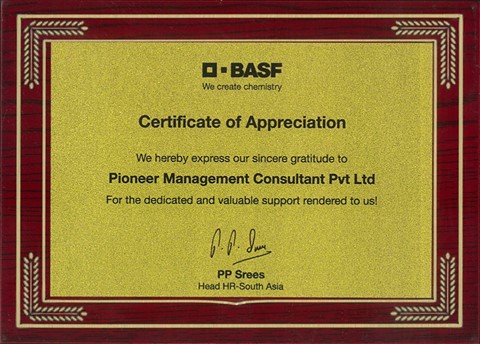Toxic workplace culture is more than just an issue affecting individual employees; it’s a systemic problem that threatens the very foundation of organizations. As leaders, we must urgently confront this issue because it erodes company culture, stifles innovation, and ultimately undermines long-term success. A recent article has shed light on the dire state of middle management within many organizations, revealing that the challenges faced by this group have escalated into toxicity.
The Middle Management Crisis
Middle managers are often caught in a precarious position, trying to balance the lofty visions and demands of upper management with the on-the-ground realities faced by frontline employees. This tension creates a perfect storm of stress and disillusionment.
Key Factors Contributing to Toxicity:
-
Unrealistic Targets and Workloads: Many middle managers are burdened with extreme stress stemming from unattainable performance targets and excessive workloads. This pressure not only affects their mental health but also trickles down to their teams, fostering an environment of fear and anxiety. As author and leadership expert Brené Brown puts it, “Daring leaders who live into their values are never silent about hard things.”
-
Inadequate Training: Middle managers frequently lack training in complex people management issues, which can lead to poor decision-making and ineffective team leadership. This gap in skills exacerbates feelings of helplessness and frustration, contributing to a toxic atmosphere. “Leadership is not about being in charge. It’s about taking care of those in your charge,” says Simon Sinek, underscoring the need for proper training and support.
-
High Turnover Rates: High turnover rates among middle managers pose a significant challenge for organizations. Research indicates that a substantial percentage of middle managers—often cited around 70%—are contemplating leaving their roles. This high level of consideration for exit signifies deep-rooted dissatisfaction and indicates a toxic environment that can destabilize teams. Frequent turnover disrupts continuity, erodes team morale, and results in a loss of institutional knowledge, ultimately hindering overall productivity and performance. “People leave managers, not companies,” as the saying goes, highlighting the importance of effective leadership in retention.
The Broader Impact
The problems facing middle management are not isolated. In fact, they have wider implications for organizational health:
-
Mid-Career Professionals Struggling: Many mid-career professionals find that job changes often lead to similar issues, as toxic work culture is pervasive across various organizations. This cycle of dissatisfaction can lead to disengagement and burnout. As psychologist Adam Grant notes, “If you’re not getting what you need from your job, you’ll be better off looking for something new.”
-
Age Discrimination: Older middle managers face additional challenges, including age discrimination, which compounds their difficulties in seeking new opportunities. This lack of mobility contributes to a stagnation of talent and innovation.
-
Financial Pressures: For many employees, financial obligations make it difficult to leave toxic environments, even when they recognize the harm it causes. This inability to exit perpetuates a culture of silence and resignation, further entrenching toxicity. “The price of being a sheep is boredom,” says Jim Rohn, emphasizing the need for individuals to seek out healthier environments.
The Urgent Need for Systemic Change
As leaders and organizations, we must recognize that addressing toxic workplace culture is not just a nice-to-have; it is essential for long-term success. Here are some systemic changes needed to detoxify these roles:
1. Redefining Expectations and Targets
Organizations need to set realistic and achievable targets that take into account the well-being of their employees. Aligning performance metrics with sustainable practices can help reduce stress and foster a more supportive environment.
As Stephen Covey famously said, “The key is not to prioritize what’s on your schedule, but to schedule your priorities.”
2. Investing in Training and Development
Providing comprehensive training for middle managers on effective people management, conflict resolution, and emotional intelligence is crucial. Equipping leaders with the necessary skills will empower them to create healthier team dynamics. “An investment in knowledge pays the best interest,” Benjamin Franklin reminds us.
3. Fostering Open Communication
Establishing a culture of transparency and open communication can help bridge the gap between management and employees. Regular feedback loops, where employees can voice concerns without fear of repercussions, will enable organizations to identify and address toxicity early on. “Communication works for those who work at it,” John Powell said, emphasizing the need for continuous effort in fostering dialogue.
4. Implementing Employee Well-Being Programs
Prioritizing employee well-being through mental health resources, flexible work arrangements, and work-life balance initiatives is vital. Organizations should promote a culture that values well-being, enabling employees to thrive both personally and professionally. “Taking care of yourself doesn’t mean me first, it means me too,” L.R. Knost highlights the importance of self-care.
5. Creating a Supportive Exit Strategy
Organizations should develop supportive exit strategies for employees who choose to leave toxic environments. This includes providing career counseling and resources for job placement, which can help alleviate the financial pressures that often keep individuals trapped in unhealthy situations. “It’s not the strongest of the species that survive, nor the most intelligent, but the one most responsive to change,” as Charles Darwin noted.
Conclusion
The toxic workplace problem is a pressing issue that cannot be ignored. It harms not only individuals but also erodes company culture and stifles innovation. By acknowledging the systemic nature of this problem, organizations can take meaningful steps toward creating a healthier work environment. As leaders, we have a responsibility to address these challenges urgently, paving the way for a brighter, more productive future for our teams and our organizations.
#ToxicWorkplace #OrganizationalHealth #WorkplaceCulture #EmployeeWellbeing #LeadershipChallenges #WorkplaceWellness #CultureChange #EmployeeEngagement #WorkplaceDynamics #MentalHealthAtWork #pmcpl #pioneermanagementconsultantpvtltd



Leave a comment